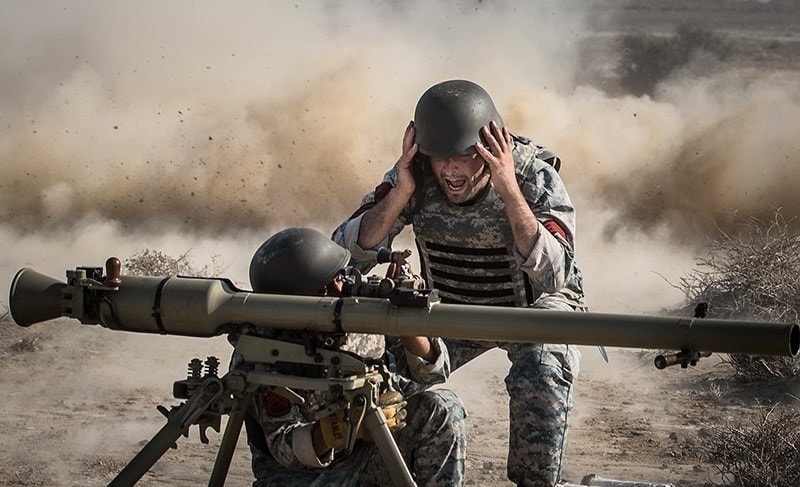Iran’s Demographics: A Brief History
When Ayatollah Ruhollah Khomeini led Iran’s Islamic Revolution in 1979, posters went up across the country depicting a good Islamic family, with a mother, father, and seven children. He closed the shah’s family planning clinics, reduced the age of marriage for girls to coincide with the onset of puberty, legalized polygamy, and raised the cost of birth control to be unaffordable for the vast majority of society. In just a few years, the average Iranian family increased to seven children.
Many Iranian economists worried about the implication of the baby boom. The revolution disrupted and derailed Iran’s economic growth and plunged the country into deep recession. Iraq’s invasion of Iran took that economic disruption and made it far worse. Khomeini initially waved off their warnings, quipping, “We didn’t rise up to get cheaper watermelons.” With time, however, he realized hardship could spark a counterrevolution. While his acceptance to end the Iran-Iraq War, a move he likened to drinking from a “chalice of poison,” made international headlines, almost as consequential was his reversal of his initial stance on family planning: In the short-term, posters went up across the country showing a good Islamic family with a mother, a father, and two children. Condoms and other forms of birth control became widely available. Within just 15 years, the average number of children to which an average Iranian woman gave birth declined from seven to two. That marks the sharpest reduction in fertility ever recorded. That was not the end of the story. By 2006, Iran’s total fertility decreased below replacement rates, and it fell more over subsequent years. While it has since recovered slightly, the United Nations projects a continued decline. When Western commentators speak of the Middle East’s youth bulge, they often lump Iran together with the Arab world. They should not. Iran’s birthrate today is equivalent to Greenland’s, that is about half that of Iraq, Yemen, or the Palestinian territories.
Why Demographics Matter
American foreign policy experts (with the notable exception of the always prescient Nicholas Eberstadt) might ignore demography as they focus on flashier aspects of the Iranian challenge that make better talk show fodder, but when Iranian leaders address their own society, the demographic crisis is front-and-center. “There are four to five years of opportunities to help fertility and population growth in the country. If this golden time is lost, we will definitely see a crisis,” Hojjatoleslam Hossein Mirzaei, a prominent parliamentarian declared in a November 2020 interview. In his most recent Persian New Year’s speech—Iran’s equivalent of the State of the Union address, Supreme Leader Ali Khamenei himself observed, “If the birth-rate is not at a sufficient level – which is the case in the present time – then in a few years’ time, the young population of the country will decrease. Then, a country that has few youths will make little progress.” Nor was that the first time Khamenei addressed the problem. “This lack of interest in bearing children is a malady. Otherwise, one naturally likes to have children. Why do a number of people prefer to have only one child? Why do they prefer to have only two children? Why do women and men avoid – in different ways – having children?” he asked the National Conference on Changing Demographics, calling the decision to avoid marriage and children “pathological.” He later called for executive policies to “denounce singlehood” in society and to “highlight women’s maternal and housekeeping role,” and elsewhere has lamented the country’s record high high divorce rates. The posters encouraging large families are again up.
When American politicos analyze Iran and the regime’s hostility toward Washington, too often they simply project their own sense of original sin onto the relationship. Perhaps they blame the 1953 coup against Prime Minister Mohammad Mosaddeq. Here, however, they ignore the shah was legal head of state and it was Mosaddeq who was casting constitutionalism aside (This is why contemporaries considered the episode a countercoup). Regardless, the conservative religious clergy who ultimately overthrew the monarchy were America’s co-conspirators not opponents in the operation. Others suggest U.S. presence in Iraq and Afghanistan drove Iran’s nuclear calculations. This, too, fails the logic test, as the Rafsanjani-era revival of Iran’s nuclear program predates U.S. involvement in either.

Image: Creative Commons.
Iran’s Demographics and the Drive for Nuclear Weapons
The reality is that Tehran’s calculations do not always revolve around America. During the Iran-Iraq War, Iran’s military posture relied on its population edge. When war erupted, Iran had 39 million people, close to three times that of the Iraqi aggressors, and an overwhelmingly youthful population. This in turn meant that Khomeini could embrace tactics like using barefoot 14-year-olds to clear minefields. As Iranian fertility crashed, however, the Iranian leadership seems to have recognized it could no longer count on a quantitative edge: There were simply not enough teens to replace those left on the battlefield. Indeed, in hindsight, it appears clear that the Iranian pursuit of nuclear weapons capability coincides most with Khamenei’s recognition that Iran required a qualitative military edge to offset the decline of its quantitative advantages. An aging population with insufficient replacement promises economic vulnerability that could make the country a tempting target in its neighborhood.
Iranian diplomats might seek to extract as many concessions as they can from their self-flagellating American counterparts, but these will not stop Iran’s nuclear drive. The regime understands it is approaching a precipice and sees its nuclear drive as a Hail Mahdi pass to buy itself immunity from its demographic destiny. The question for President Joe Biden should be whether his team can run enough interference until the regime meets its demographic fate.
Michael Rubin is a resident scholar at the American Enterprise Institute, where he specializes in Iran, Turkey, and the broader Middle East. He also regularly teaches classes at sea about Middle East conflicts, culture, terrorism, and the Horn of Africa to deployed US Navy and Marine units.

